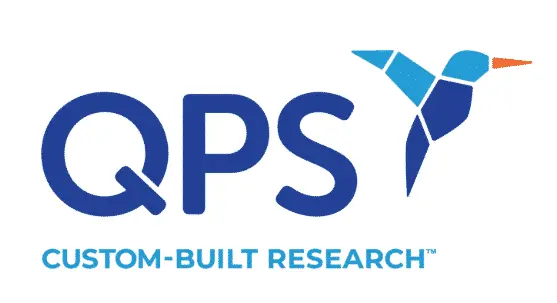RNA sequencing studies of thousands of post mortem human brain samples have generated massive datasets for use in medical research. These studies implicate many different biological functions in Alzheimer’s Disease (AD) — but how do these findings translate to proteins, the most important building blocks in the brain?
Two studies from scientists at Emory University School of Medicine set out to find the answer by studying the proteomes of thousands of brains. A proteome is a set of all expressed proteins in a cell, tissue or organ. The systematic analysis of the proteins within a defined system in order to assess their identity, quantity and function is called proteomics — and this field of study is invaluable to AD research.
The first study, “Large-scale Proteomic Analysis of Alzheimer’s Disease Brain and Cerebrospinal Fluid Reveals Early Changes in Energy Metabolism Associated With Microglia and Astrocyte Activation” was led by Allan Levey and Nicholas Seyfried of Emory University and published in Nature Medicine (April 2020). The study identified an uptick both in proteins involved in sugar metabolism and in those specific to microglia and astrocytes in the brains of people diagnosed with AD.
“Shared Proteomic Effects of Cerebral Atherosclerosis and Alzheimer’s Disease on the Human Brain,” published in Nature Neuroscience, was led by Levey, Seyfried and Aliza Wingo. This study tied abnormalities in oligodendrocytes, which are glial cells with great impact on brain development and neuronal function, to both AD and cerebral atherosclerosis (CA). Remarkably, patients with CA had more neurofilament light chain protein (NfL) — widely known as a cerebrospinal fluid (CSF) biomarker for AD and neurodegeneration in general — in the brain, independent of AD diagnosis status.
Microglial responses and other biological functions have been implicated in AD pathogenesis through transcriptomics, but not every messenger RNA translates into a functional protein. Technical advances in proteomics allow scientists to assess the thousands of proteins in the brain; and now, with this massive collection of post mortem brain samples, they have access to enough samples to draw more significant conclusions.

Microglia and Astrocyte Activation
In the Nature Medicine study led by Levey and Seyfried, the research team used mass spectrometry to measure the proteomes of 2,000 brains. The brains came from controls, people with asymptomatic AD and people who had been diagnosed with AD. The researchers compared the levels of more than 3,000 proteins in 453 dorsolateral prefrontal cortex samples from four well-characterized cohorts; the proteins fell into 13 different modules based on co-expression patterns.
Six modules significantly correlated with major AD hallmarks, including beta amyloid plaques, tau tangles and cognitive function impairment. Three modules — M1, M3 and M4— had the strongest ties to AD pathophysiology. M1 and M3 were dialed down in AD brains compared with controls. M1 comprised neuronal proteins involved in synaptic function, and M3 was flush with mitochondrial proteins.
M4 proteins were upregulated in both asymptomatic and symptomatic AD brains. Researchers focused more deeply on this most significant module, which contained proteins involved in glucose metabolism as well as those expressed in microglia and astrocytes (microglia are the primary innate immune effector cells of the central nervous system, and astrocytes are the dominant glial cell in the brain). They found that many of the proteins in this module are products of genes near AD risk loci. This suggests that proteins in the module could be causing AD, not just responding to it.
The researchers conjectured that the majority of microglial proteins in the module are neuroprotective rather than harmful or proinflammatory. Their hypothesis was that the increased expression of this module reflects an attempt by the microglia to protect the brain — which then fails as the disease progresses. The proteomic data cannot prove that the metabolic proteins came from glia; their tight co-expression with glia-specific proteins suggests they may reflect a stepped-up metabolism in the cells as they exert their protective functions.
Researchers detected 27 of the proteins in the M4 module within the CSF of two cohorts. Ten proteins were significantly elevated in people with AD, including CD44, PRDX1 and DDAH2, and metabolic proteins lactate dehydrogenase (LDHB) and pyruvate kinase (PKM). Three proteins — CD44, LDHB and PKM — were elevated in the CSF of asymptomatic people who had biomarker evidence of AD. CSF findings may suggest that these proteins can be tracked longitudinally in living subjects, which could help explain their role in disease progression.
Protein-wide Association Studies in AD and CA
In the Nature Neuroscience study, first author Aliza Wingo and colleagues used proteomics to explore the effects of CA and examine whether they coincide with effects seen in AD. The team sequenced the proteomes of 438 samples from a single cohort, correlating with eight brain pathologies in addition to CA:
- Beta amyloid
- Tau tangles
- Gross infarcts
- Microinfarcts
- Cerebral amyloid angiopathy
- TDP-43
- Lewy bodies
- Hippocampal sclerosis
The researchers used a protein-wide association study (PWAS) approach to look at which proteins were altered in atherosclerosis, independent of other pathologies. Altogether, 114 proteins emerged as significant; 32 proteins — many from oligodendrocytes — were more abundant. Eighty-two of the proteins were scarcer; these proteins played roles in mRNA processing and splicing. These associations held independently of cerebrovascular risk factors such as infarcts, diabetes, hypertension and smoking.
In addition to the PWAS, the team ran a weighted co-expression analysis on the whole proteomic dataset. They identified 31 modules of co-expressed proteins; five of these were independently linked to CA. Overall, they painted a picture of the brains of people with CA that had:
- Elevated oligodendrocyte differentiation, development and remyelination
- Decreased RNA splicing and mRNA processing in neurons and astrocytes
- Decreased synaptic signaling, regulation and plasticity
To examine how the proteomic effects of AD would match up with the proteomic effects of CA, the researchers ran another PWAS with 856 proteins that associated with a clinical AD diagnosis. Of the 856, 23 of those proteins were also associated with CA; of those 23, seven proteins were more abundant in both diseases and were part of an atherosclerosis-associated module with many oligodendrocyte proteins.
There were two other proteins of note in this module: neurofilament light chain (NfL) and neurofilament medium chain (NfM) were higher in both CA and AD, and increased with deteriorating cognition. These neurofilament proteins are theorized to reflect axonal damage, and NfL is a CSF biomarker for AD. But the researchers found that levels of NF protein associated only with CA and not with beta amyloid, tau tangles or any other pathologies.
When the team adjusted for CA, the relationship between neurofilaments and AD was not significant. This suggests that abundant NF proteins reflected damage inflicted by atherosclerotic plaques, not by beta amyloid or tau pathology. It also supports the theory that CA is a strong contributor to cognitive impairment.
“A strong finding was that these protein clusters were reproduced across cohorts, tissues and proteomic techniques,” wrote Betty Tijms of Amsterdam UMC and Pieter Jelle Visser of Maastricht University. “The proteomic dataset is a major asset for the research community.”
Worldwide, 50 million people are living with Alzheimer’s Disease and other dementias. June is Alzheimer’s and Brain Awareness Month, and QPS joins the Alzheimer’s Association in raising awareness and inspiring action.
QPS is a GLP/GCP-compliant contract research organization (CRO) delivering the highest grade of discovery, preclinical, and clinical drug development services. Since 1995, it has grown from a tiny bioanalysis shop to a full-service CRO with 1100+ employees in the US, Europe, India and Asia. Today, QPS offers expanded pharmaceutical contract R&D services with special expertise in Neuropharmacology, DMPK, Toxicology, Bioanalysis, Translational Medicine and Clinical Development. Through continual enhancements in capacities and resources, QPS stands tall in its commitment to deliver superior quality, skilled performance and trusted service to its valued customers. For more information, visit www.qps.com or email info@qps.com.





